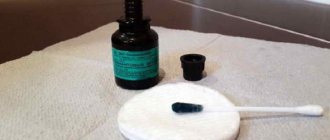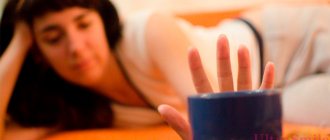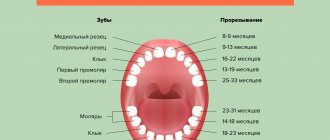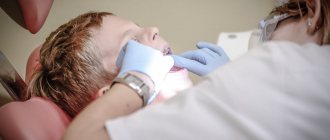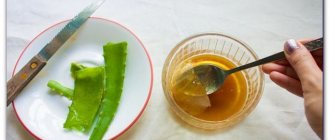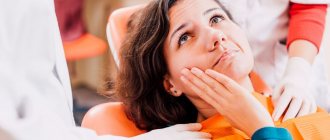Chickenpox or chickenpox is a childhood infectious disease. It occurs more often in children who attend kindergarten or school, especially primary school. Sometimes the disease occurs in adults. This is explained by the high contagiousness of chickenpox; the infection is easily transmitted to those caring for a sick child. It is not difficult to suspect chickenpox. The main symptom is a papulovesicular rash. In addition to the rash, malaise, headache, and increased body temperature are observed.
If these symptoms appear, parents should immediately contact a pediatrician or pediatric infectious disease specialist. The doctor will prescribe symptomatic therapy and will definitely prescribe products to lubricate the rashes.
Papulovesicular rash causes severe itching; children begin to scratch the papules, which can lead to suppuration. Such complications should not be allowed, therefore, the only correct solution is the use of special ointments for chickenpox.
Diagnosis and treatment of chickenpox in a child: what and how should parents do in this case?
consultation with a pediatrician at a medical facility Chickenpox (varicella) is an infectious disease caused by the varicella zoster virus.
It spreads easily through direct contact with an infected person through droplets of liquid in the air that appear when the sick person coughs or sneezes. The virus can also be transmitted through unwashed hands. Chicken pox can cause severe intoxication, but only in rare cases can children develop serious complications. Chickenpox is not treated with antibiotics. Treatment usually consists of relieving symptoms, which usually include fever and rash. Chickenpox vaccination is given to children aged 18 months as part of routine vaccination, in accordance with the National Calendar. Vaccination is very effective in preventing the onset of the disease and has few side effects. A second dose of varicella vaccine (a booster) may be given to further enhance immune protection. The second vaccination should be given at least one month after the initial vaccine administration.
Possible complications
- Aesthetic skin problems. After pockmarks, there may be blisters on the skin, small potholes, like after acne, etc., which cannot always be eliminated later.
- Pneumonia. Most often this happens to children whose immunity is significantly weakened.
- Brain damage (so-called “chickenpox encephalitis”). A rare but possible phenomenon associated with chickenpox, in which certain areas of the brain are temporarily “attacked.” Which, accordingly, causes disorder of behavior and facial expressions, tremors and loss of coordination. However, with proper therapy it can be successfully treated.
- Reye's syndrome (“acute hepatic encephalopathy”). This is a very rare, but at the same time very serious disease, which, according to some medical studies, occurs due to the use of drugs based on acetylsalicylic acid (for example, aspirin) in the treatment of chickenpox.
It should be remembered that most complications with chickenpox (as with other viral infections) occur due to dehydration. Give your child plenty of water and the risk of any complications will be significantly reduced.
How is chickenpox spread?
Children and adults can get chickenpox, but the disease is more common in unvaccinated children. Chickenpox is highly contagious. Infection occurs through direct contact with a sick person, especially if there was contact with liquid from the chickenpox papules (blisters) of the patient. Chickenpox is also spread through droplets of fluid that are released into the air when you cough or sneeze. A person with chickenpox becomes contagious to others one to two days before the rash appears, and remains so until the last blisters on the skin have dried. Family members who have not had chickenpox may need to stay away from the child during this stage of the disease. Anyone who takes oral steroids long-term or is immunocompromised (for example, due to chemotherapy), pregnant women or children under three months of age should see a doctor if they have been in contact with someone with chickenpox, as they are very are likely to develop the disease, they may need preventive treatment to prevent the disease from developing.
Children with chickenpox should not go to nursery, kindergarten or school until the last blister on the skin has dried. Parents are required to notify the school or kindergarten if their child has chickenpox, because there may be other children in the group or class who will need to be vaccinated or undergo preventive treatment.
How long does itching last for children with chickenpox, and how to get rid of it faster?
How long does itching last for chickenpox in children? It’s difficult to give a definitive answer about the duration. It all depends on the number of blisters on the body and the rate at which new papules appear. If there are few rashes, the itching will disappear after 5-7 days. If pockmarks form in large numbers, the child will have to endure the itching for about 10 more days.
- The child will stop itching completely when the papules dry out and new foci of infection stop forming.
- As soon as small rashes appear on the child’s body, they need to be treated immediately. Most often, parents use a solution of fucorcin or brilliant green.
- These substances prevent the spread of papules and help dry out ulcers. However, there are other, no less effective drugs. We will talk about them further.
Antihistamines
Such substances can be used internally, or they can be used to treat wounds superficially. Everything must be done as prescribed by the doctor, based on the age of the child. Self-medication should not be done, as this can provoke an overdose and unwanted reactions. Give preference to medications that will reduce the likelihood of side effects.
The most effective antihistamines for itching with chickenpox include:
- "Diazolin" . A well-known inexpensive rescuer from all signs of allergies;
- "Suprastin" . Has a powerful sedative effect. Available in tablet form and suitable for children from 1 month. To make it more convenient for your child, crush the tablets into powder and dilute with water. Can be added to soup or puree;
- "Loratadine" . Helps relieve itching. Do not give to children under 2 years of age;
- "Peritol" . Has a sedative effect. Relieves nervousness, itching, and normalizes the child’s sleep;
- "Fenistil" . Participates in blocking histamine receptors. Suitable for children from 1 month;
- "Fexadin" and "Telfast" . Allowed to be given to children from 6 years of age;
- "Cetisirine" . Can be given to children from 1 year. Give your child 5 drops of the drug in the morning and evening.
It is better to give them to children at night. They will help relieve itching, which will have a positive effect on the child's sleep. If your children suffer from diathesis or allergic reactions, antihistamines must be prescribed by a doctor.
Antiseptic drugs
Such products help dry out the rash and protect against secondary infection. They should be used during the day, after the child takes a bath. The number of applications should be prescribed by the doctor, based on the course of the disease.
Tell your doctor about using any medications
Effective antiseptics against itching with chickenpox include:
- "Fukortsin" . Has a dark scarlet tint. Apply it with a cotton swab to inflammation. The product is effective in the early stages of the disease, allowing you to track the number of new papules.
- "Kalamine" . This solution is based on herbs. It can be used for children from 1 year. Helps cope with inflammation and redness.
- "Tsindol" . Dries out rashes that contain infectious fluid inside.
- "Miramistin" and "Chlorhexidine" . A universal product. Fights infection and soothes the skin.
External means
These drugs are more effective in relieving itching due to chickenpox. They combine anti-inflammatory, antipruritic and antiseptic effects.
- "Acyclovir". The ointment should be applied no longer than 5 days. It is better to use it during the day, 5 times. Apply to the bubbles with a cotton swab;
- "Iricar" . A couple of uses and all painful and unpleasant sensations will be felt much less;
- "Gistan" . Contains soothing herbs. Can be used even on newborn children;
- "La Cree" . Helps relieve swelling and inflammation. The best option for sensitive skin. Apply the cream to papules 3-4 times a day;
- "Viferon". Has an antiviral effect. This remedy can be used not only on the skin, but also on the mucous membranes of the body;
- "Fenistil". An effective remedy for removing itching and swelling;
- "Epigen" . This drug can replace brilliant green. During the acute course of the disease, apply the product 5 times a day, and when chickenpox begins to recede - 2 times. It is also allowed to be applied to the mucous membranes of the body;
- "Delaxin" . If you bought the drug in the form of synthetic tannin, add it to the bath. Apply the product in powder form to the skin. Rub with your palm using gentle movements;
- "PoxClean" . The composition does not contain alcohol, which can dry out the skin. Allowed to be applied to the mucous membrane;
- Zovirax Ointment or cream helps fight rashes. The duration of use depends on the number of ulcers on the body. The itching disappears within a few minutes. It is better to use it at night to help your child sleep better.
Sedatives
Young children with chickenpox are quite restless. To normalize their nervous system and relieve itching, it is recommended to use sedatives.
X have proven themselves well:
- Tincture of valerian or motherwort. Add a few drops to tea or water. The amount depends on the age of the child. For one-year-old children, 1 drop is enough, and for 5-year-olds – 5 drops.
- "Leovit" . Suitable for children over 12 years old. Helps reduce nervousness and sleep better.
- "Edas." Does not harm small children.
Folk remedies
- Some parents prefer natural remedies that effectively help get rid of itching due to chickenpox. Chamomile, lavender and calendula have proven themselves well
- You need to make a decoction of herbs. Soak a piece of cotton wool in it and apply it to the rash. You can use tea tree oil. It will not only help relieve itching, but also dry out inflammation.
There are several other equally effective folk remedies:
- Wetting and rubbing with olive oil.
- Lotions with soda. Dilute 2 tsp in 100 ml of water. soda Soak cotton wool in the solution and apply to the rash. The procedure is carried out every day until the disease subsides.
- Barley decoction. Soak the seeds in boiling water for 60 minutes. Strain and wipe the papules with the prepared tincture.
There are several recommendations to speed up recovery. First of all, give your child antiviral drugs. During illness, children's body temperature rises. If you do not knock it down, you can provoke problems with the nervous and cardiovascular systems.
It is allowed to reduce the temperature above +38°C. If they are lower, it means the body is fighting the virus. Do not give children aspirin, as it has a negative effect on the liver.
Signs and symptoms of chickenpox
A child is likely to have chickenpox if they:
- The temperature has risen
- He feels tired and irritable
- The skin started to itch
- A characteristic chickenpox rash appeared on the skin
The rash usually appears 10 to 21 days after first contact with someone who has chickenpox. The rash usually appears first on the chest, back, or face. It can then move to other areas of the body, including the mucous membrane of the mouth. At first, the rash looks like small pimples. They later become blisters full of liquid.
Most children with chickenpox are sick for about five to seven days.
Chickenpox symptoms
- The rash is everywhere, and different, all kinds - this is the main symptom of chickenpox. Rash on the face, scalp, trunk, limbs.
- When the rash appears, the baby's temperature rises, sometimes up to 38-39 C (although some children have no temperature at all).
- The child becomes lethargic, capricious, and his appetite worsens.
The rash first appears as pale pink spots. They then turn into bubbles filled with clear liquid. The blisters are surrounded by a halo of reddened skin. Already on the 2nd day, the contents of the bubbles become cloudy, and the surface wrinkles and becomes covered with brown crusts. They disappear after only 1-3 weeks. Spots, blisters, and crusts may be present on the baby’s body at the same time.
- With chickenpox, the biggest problem for both mother and baby is severe itching. Moreover, the smaller the baby, the more difficult it is to explain to him that he cannot scratch! This is fraught with infection of the wounds by bacteria, because the child’s body is weakened. If this happens, marks may remain on the skin for life - small scars, the so-called pockmarks.
Care and treatment at home
Children with chickenpox can usually be cared for and treated at home. Because chickenpox is a virus, it cannot be treated with antibiotics. Treatment is to control the itching of the rash and other symptoms associated with viral illnesses. There are many medications and creams that can relieve itchy skin.
It is important to ensure that your child drinks enough fluids and does not become dehydrated. Give your child liquids in various forms: clean water, jellies, sorbets, soups and other liquids.
Children with chickenpox may have a fever and feel tired and irritable. Important to know: Aspirin is contraindicated for a child with chickenpox. Children with very severe infections or serious illnesses may receive additional antiviral medications as prescribed by their doctor.
Herbal ointments
Such means include:
1. Alpizarin (suppresses the spread of viral infection, the active ingredient is Indian mango leaves). 2. Gossypol (cotton seeds and cotton plant - the basis of the drug). Gossypol slows down the spread of viral infection. 3. Kelofibrase (relieves inflammation, contains camphor, heparin). Prevents scar formation. 4. Aldara (imiquimod, interferon inducer). An excellent regenerating agent. 5. Helepin (lespedeza kopeck extract), inhibits viral activity. 6. Dermatix (silicon-containing polymers and inorganic divalent silicon oxide). The drug has a remodeling, softening, antiproliferative and anti-inflammatory effect. Eliminates redness and severe itching.
When to see a doctor?
Parents should call a doctor if:
- Child's age is less than 6 months
- Inflamed, red areas of skin appear around the blisters, which may indicate a secondary bacterial infection.
- Children become increasingly ill, they become drowsy, the temperature rises above 38C, and children drink little liquid or refuse to drink
- If your child feels unwell with a high fever and a skin rash that looks like small, bright red or purple spots or bruises that don't fade when you press on them, this may be a sign of meningococcal infection.
Chickenpox is not dangerous when parents know what to do, vaccinate their child in a timely manner, and quickly decide to call a doctor. After an illness, a fairly stable immunity develops, and the likelihood of recurrent illness is minimal.
In our medical center, you can consult with an immunoprophylaxis specialist or a pediatrician about when you should vaccinate your child or call a doctor at home if your baby suddenly gets sick.
Call a doctor at home Make an appointment with a doctor or call +7 (812) 331-17-74
Why shouldn't you scratch chickenpox rashes?
Severe itching with chickenpox leads to the fact that the child begins to actively itch.
If he does not stop, this is fraught with the following consequences:
- Re-infection;
- Increased duration of illness;
- Other bacteria can enter an open wound and cause decay;
- Severe pain because the blisters will not heal;
- Scars will remain after the disease subsides for life;
- Spreading the virus throughout the body, which will lead to an increase in the number of rashes.
Frequently asked questions from patients and parents
